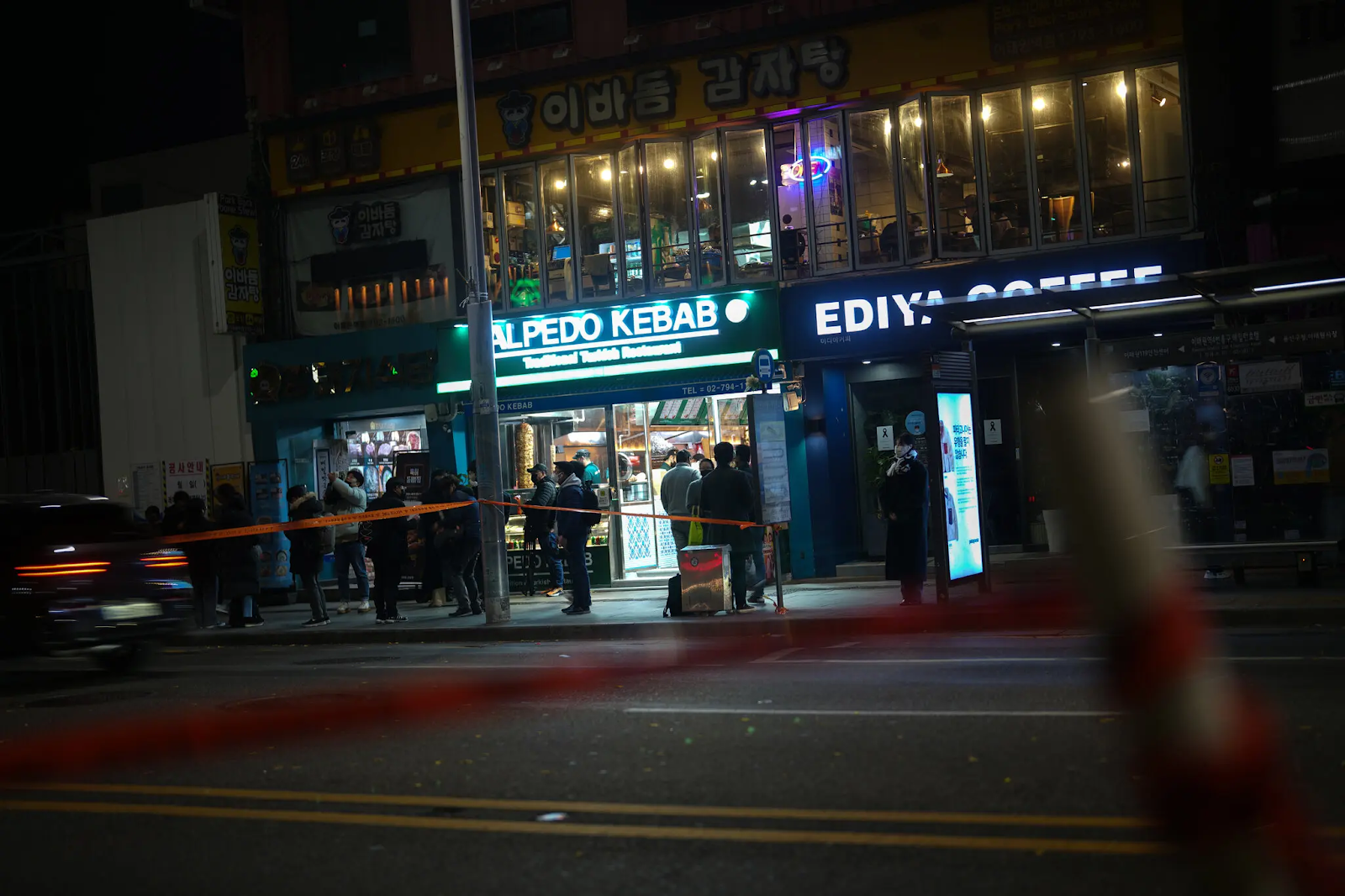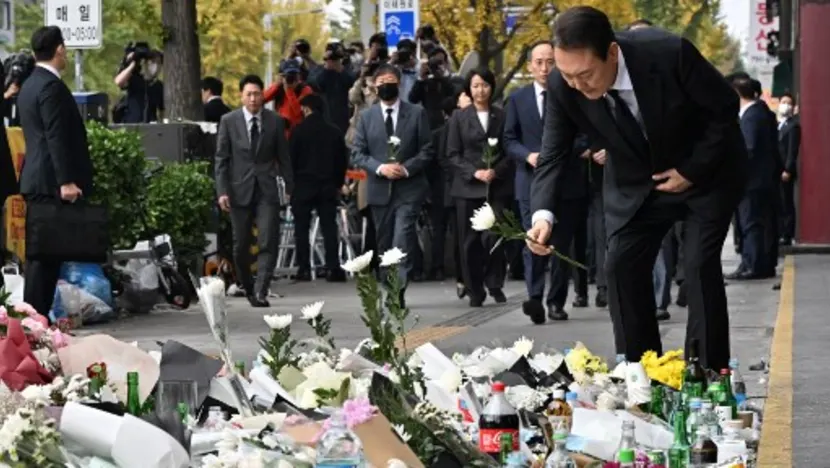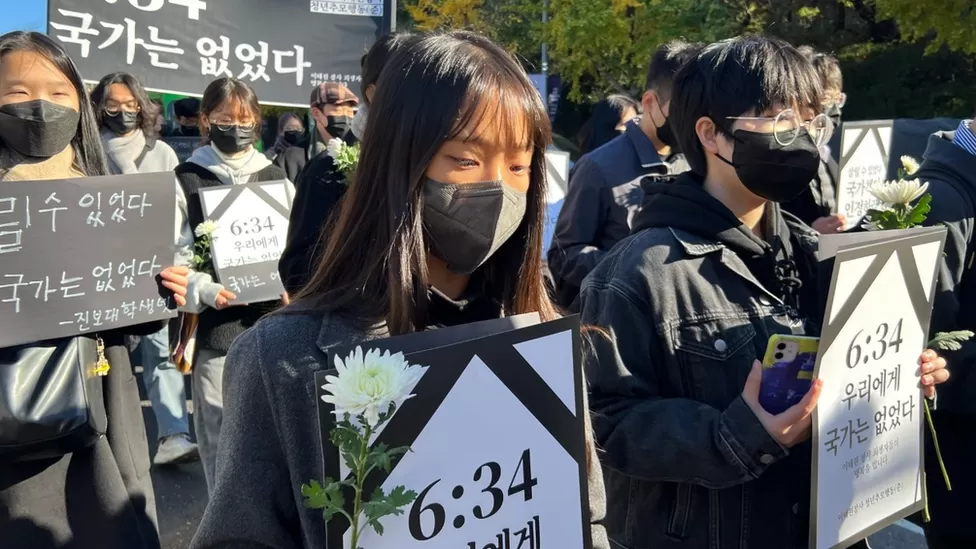Itaewon is well-known for its variety and vibrant nightlife. A week after a tragedy that claimed the lives of more than 150 young people, the neighborhood has become a site of memorial.
About Itaewon Crush, action by the authorities

On October 29, a catastrophic crowd crush during Halloween celebrations in Itaewon left 196 people injured and killed 156 people. Among the dead, were mostly young people. Known for its diversity and vibrant nightlife, Itaewon is one of the most popular districts in Seoul, especially amongst youngsters.
After more than 150 young people were killed in a mob crush while celebrating Halloween last Saturday, Itaewon has now become a memorial of grief. Bars and restaurants that were throbbing with K-pop music, last week are also now silent. Their doors are now filled with condolence letters and messages. Also, the local government requested people to refrain from dancing and playing loud music.
Several vigil-protests were staged throughout the capital, as a result of public outrage over the worst tragedy that hit South Korea in almost a decade. The authorities have started an investigation. As a part of their inquiry the authorities have searched local police, fire stations as well as municipal offices.
Apologies from the authorities, vigil-protests near City Hall

The national police chief and the President, Yoon Suk-yeol, who promised to improve crowd management within the capital in the future, have both apologized publicly. However, it hasn’t been enough to appease the public’s demand for justice. Many people have a deep sense of shame at the government’s failure to protect its youngsters, which is ironic for a nation known for its energetic, K-pop-focused image worldwide.
As a result of public outrage, the floral wreaths the president and the mayor of Seoul laid at a memorial on Friday, were torn apart by a woman, who local media later identified as the mother of one of the victims.
In a video that was aired by local TV stations, she (mother of one of the victims) was seen saying, “What’s the use of these flowers when they can’t protect our children?” Later the woman was escorted away from the memorial by uniformed police officers as she yelled, “What’s the sense of standing next to these wreaths when you let our babies die?”

Protests against President Yoon Suk-yeol
Activist and political groups held at least seven vigil-protests throughout the capital, on Saturday. Before the Itaewon tragedy, an alliance of progressive groups called Candlelight Action had been conducting regular political protests against President Yoon.
Tens of hundreds of protesters filled two lanes of the main road near City Hall where the protest was conducted. Many protesters carried black placards that said, “Stepping down is a gesture of condolence,” sending President Yoon a clear message.
On the stage, speakers denounced the government in statements interspersed with sad musical performances and Buddhist monks reciting prayers. Christian and Buddhist leaders made demands for President Yoon Suk-yeol’s resignation and questioned how the nation could mourn without knowing the truth behind the tragedy.
“Although it is obvious that the government is responsible, it is seeking culprits from irrelevant organizations. The government failed to fulfill its most fundamental responsibility, which led to the incident” one of the speakers said. The angry crowd chanted “Yoon Suk-yeol government, resign now,” waving their placards and candles.
Youth Political groups and their allegations

At Itaewon earlier in the day, 200 demonstrators from various young political groups gathered near the scene of the event. They carried placards that said, “At 6:34 the country was not there [for the victims],” they dressed in all black and wearing face masks. Hours before the crowd crush occurred, there were 11 emergency calls made to the police.
The youth protesters silently marched down Itaewon’s busy main road after holding a moment of silence while facing the alley with their heads down.
They carried black posters that stated, “We could have saved the victims, and the government should acknowledge their responsibility,” along with white chrysanthemums, which are considered to be the flower of mourning in Korean culture.
“I first felt depressed. Now I’m furious. This incident could have been avoided, which is why I’m here. They were people around my age,” said Kang Hee-joo, a 22-year-old university student. Youth activists gave speeches at a war memorial, which was their final stop.
One speaker referred to the 2014 ferry disaster, which claimed more than 300 lives, mostly high school students, and said “We are not safe, this society is not normal. The government is not fulfilling its responsibility, it has pushed it to the youth. What kind of lesson did we learn from the Sewol incident?”
“Every election, they promise to bring change. But, why is there a social catastrophe every time? The young people are asking about this” said another protester.













